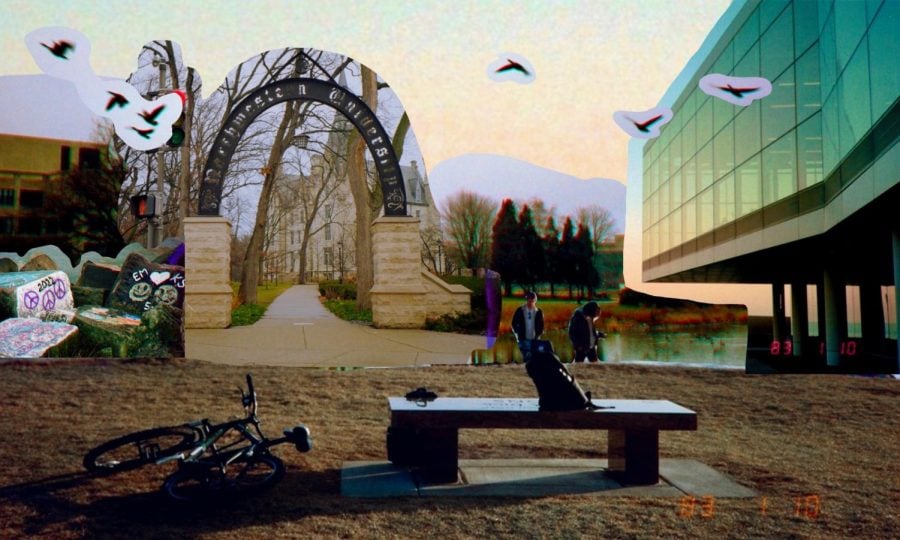Student film photographers use the medium to live in the moment
Illustration by Beatrice Villaflor
A collage of film photographs taken by Weinberg freshman Seoyeon Yoon of campus landmarks, like the Lakefill and The Arch.
January 30, 2023
SESP freshman Tone Jackson uses film to find the beauty and liminality in common campus landmarks.
“Film slows you down and forces you to really think about what you’re shooting,” he said. “In the modern age, we have so many cameras where you can take a thousand pictures of the same subject without any repercussions.”
As Jackson speaks, they scroll through their film photos of Deering Library and Ryan Family Auditorium on their iPhone. Jackson said being intentional with film photographs is central to making the most of the medium.
McCormick freshman Naka Thampeera agreed that the physical limitations of film is what makes it more meaningful. She said being unable to delete shots from a roll means she has to be more purposeful with her photography.
“You only have 36 photos in a roll,” Thampeera said. “You can’t just shoot at random things — that makes film more special.”
Jackson said part of the resurging popularity of film lies in the desaturated and grainy visuals it provides. The understated look of film cameras seems more grounded in reality because of the imperfections in photos in comparison to digital cameras, which he said were overly realistic at times because of the camera quality.
Thampeera said the colors in the film — from the greens of Fujifilm to the purples of Kodak Portra — keep her coming back to this form of photography.
“There’s imperfections in film where it just makes the photo look real,” Thampeera said.
Her current camera once belonged to her parents — a testament to the lasting impact film photography has had on her family.
In the age of filtered photographs and photo-editing applications, film photography reminds Thampeera of a simpler time. Thampeera said experimentation is always the goal with film — which means the end result can be a surprise.
“The process of it makes the pictures mean something and I think that’s the biggest appeal for people,” Jackson said. “It’s a really beautiful process, especially development.”
The prolonged development process contributes to the nostalgia evoked by the medium, according to Jackson.
Before being seen by the photographer, rolls have to be chemically treated in darkrooms and bleached. The process can take several hours, if not days.
“It’s really fun to just go through and see all those memories — a picture that you forgot that you took or maybe a picture that someone else took — it’s always a surprise,” Jackson said.
Jackson said being able to explore the darkrooms on campus inspired them to take Art Theory & Practice 250: Introduction to Photography this quarter.
While students may be more familiar with the darkroom in Norris University Center, Jackson said he prefers the darkroom in Kresge Hall.
“It’s just fun to just sit in the lab because of all the equipment that’s just sitting around,” Jackson said. “(There are) lots of old beat-up bottles full of random chemicals. It’s like nothing I’ve ever seen before.”
This doesn’t mean film photography comes without its cons. Developing film is costly, which Jackson said makes learning development all the more attractive.
Although costs continue to rise, Weinberg freshman Seoyeon Yoon said the grins evoked by a new set of film scans remain priceless.
“There’s a lot happening in the day and you sometimes forget about those things — those small, happy things that happen in your life,” Yoon said. “Film photography seemed to really capture those small moments.”
Email: [email protected]
Twitter: @beatricedvilla
Related Stories:
— Schwartz: How exploring photography helped me develop confidence












